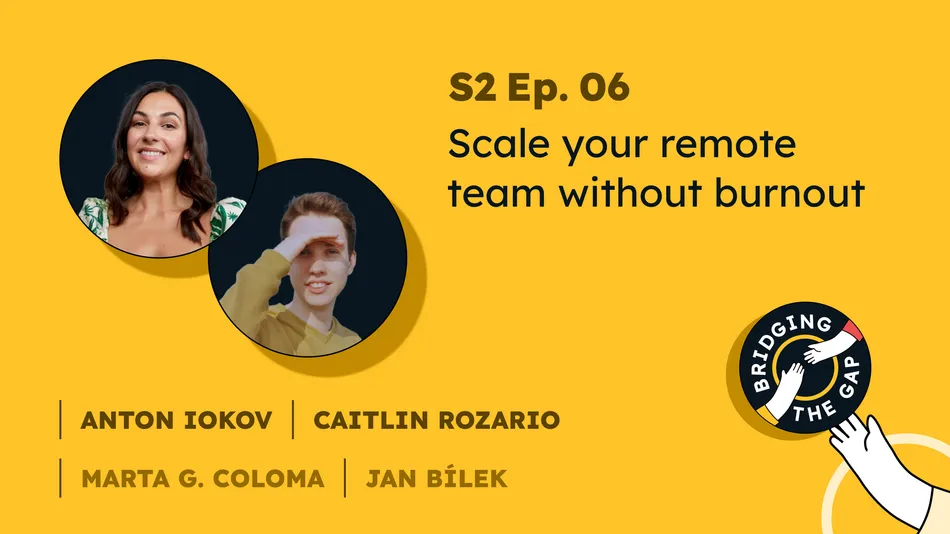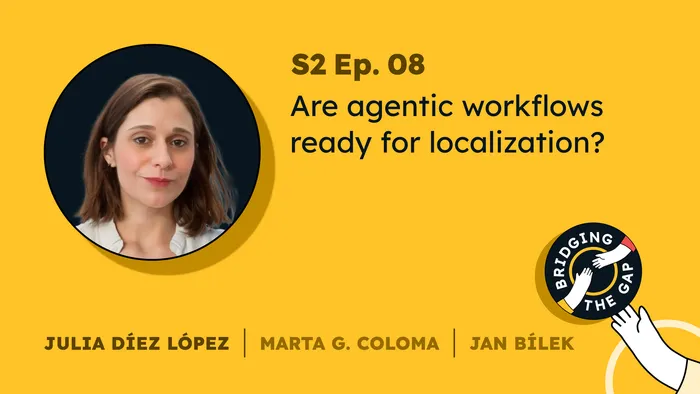Remote work isn’t just a trend. For companies working across languages, markets, and regions, it’s the default. But how do you grow a remote team without falling into chaos, burnout, or misalignment?
In this episode of Bridging the Gap, Caitlin Rozario (founder of Interlude, Head of Brand & Culture at Metrikus) and Anton Iokov (Head of Growth at Fibery) join Marta G. Coloma and Jan Bílek to talk about what makes remote work actually work. From async rituals to team culture, they explore what happens when growth crosses time zones — and how to stay motivated (and human) while scaling.
📝 The highlights 🔗
Remote work starts with culture, not tools 🔗
Caitlin makes it clear: remote success isn’t about more platforms or better Slack threads. It’s about structure, expectations, and shared norms. The basics matter most: clear working hours, boundaries around availability, and documented goals that guide collaboration across locations.
“You don’t need more tools. You need clarity first.”
Transparency is the new visibility 🔗
Drawing from his experience at a remote-only tech company, Anton shares how Fibery avoids meetings, tracks progress asynchronously, and encourages team members to “radiate” what they’re working on. Without in-office cues, writing things down and making work visible becomes a basic management function.
Remote teams are built on trust 🔗
Knowledge work is complicated to track: you can’t manage knowledge workers by outputs alone. Whether someone is debugging a feature or designing a strategy, the pace and process won’t always show up as daily deliverables. That is when sustainable productivity comes in. Both our guests stress that trust, autonomy, and recognizing different working rhythms are the solution to this challenge.
“There is no informal flow of communication — you have to make it explicit.”
Localization makes remote unavoidable 🔗
In global teams, especially in localization and translation, remote work isn’t optional. You need people embedded in-market, not just centralized in HQ. Without local expertise, quality is likely to decline. That's why companies that want to grow internationally have to adapt their culture, not just their headcount.
In-person time still matters 🔗
Retreats, hubs, and hybrid meetups are still valuable, not just for alignment but for well-being. Caitlin reminds the audience that humans need connection, even in asynchronous roles. A strategic retreat, a coworking lunch… There are many options, but it's important to take space for in-person time, as it ultimately pays off in clarity and energy.
🌟 Star quote 🔗
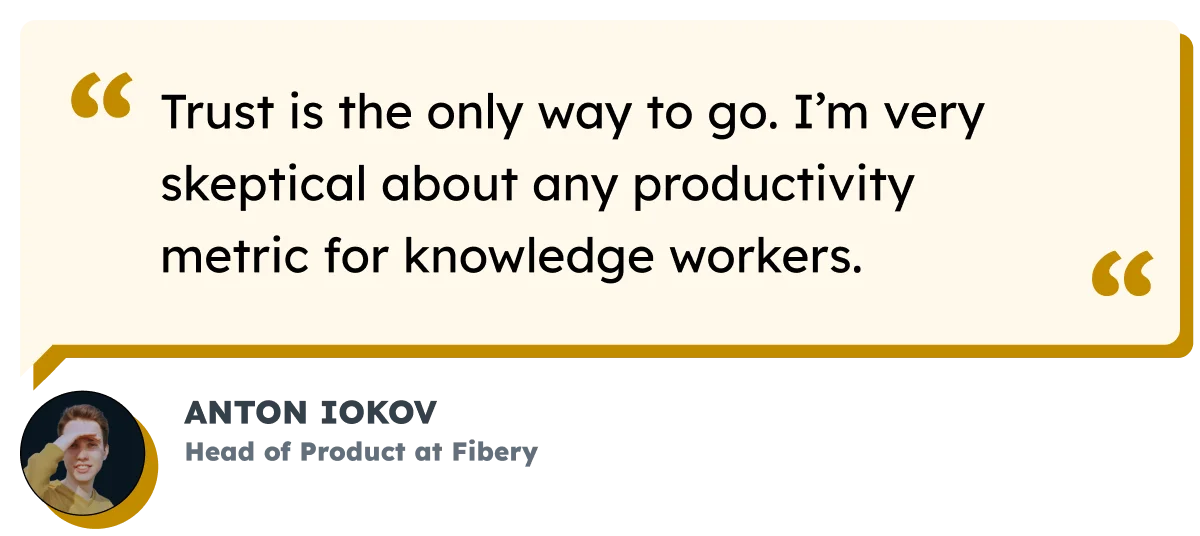
🎙️ Watch & listen 🔗
YouTube 🔗
Spotify 🔗
🗞️ Additional resources 🔗
- Navigating the Future of Work: Global Perspectives on Hybrid Models and Technology (Zoom)
- The Radically Remote Recap – LinkedIn’s Largest Remote Work Newsletter
- ✋Remote work at Fibery: principles & practices
- Daily check-ins (Fibery)
- Jan's Substack
- Interlude
📹 Related episodes 🔗
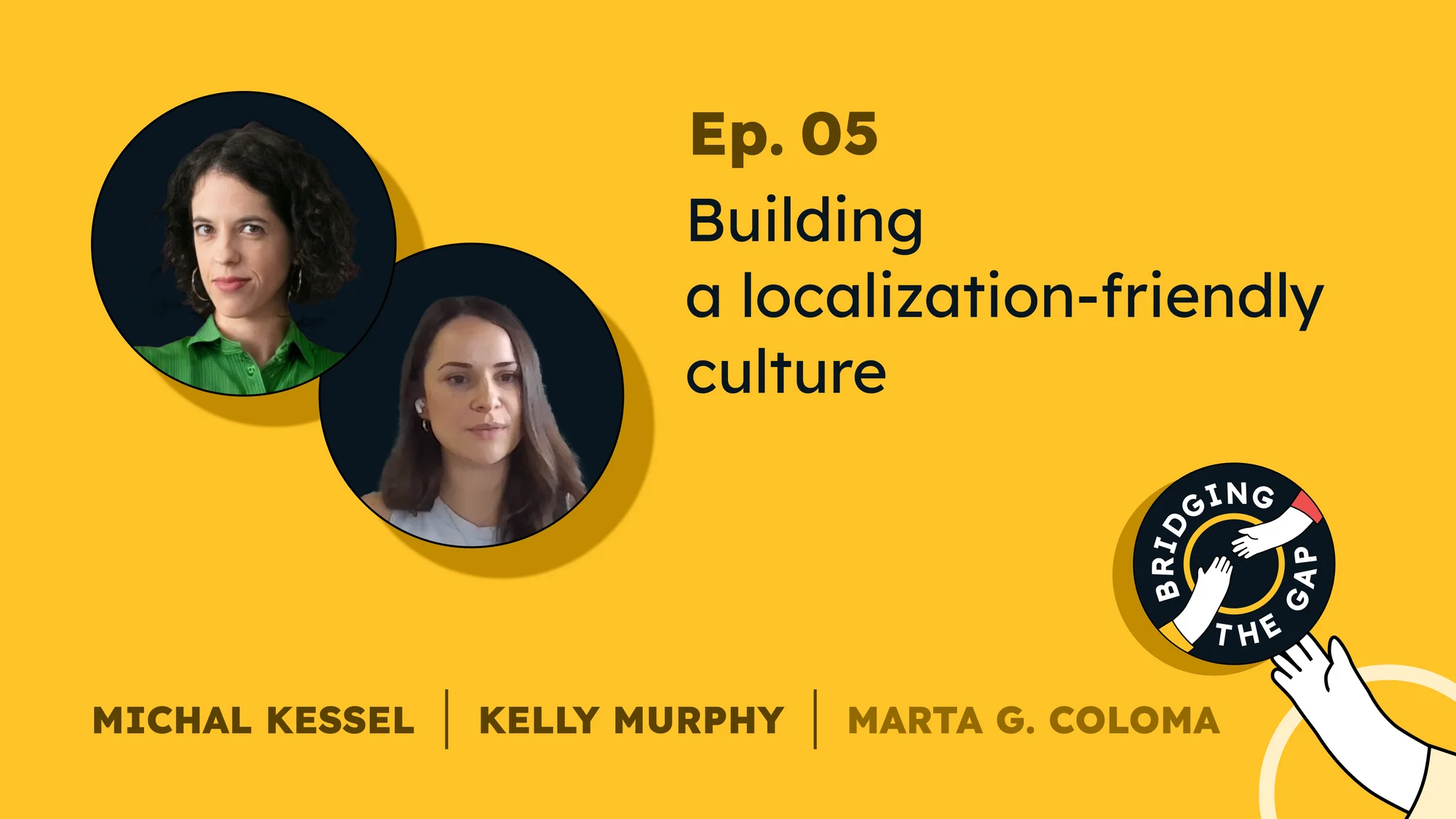
📲 Follow the podcast on LinkedIn to be notified when we release a new episode!
💌 Connect with the guests & hosts 🔗
📚 More on the blog 🔗
Working remotely means finding the right balance between structure and flexibility, especially when your team is spread across time zones, in a flow state, or focused on deep, complex work like localization. Below, we suggest some strategies to stay organized and get meaningful work done. ⬇️
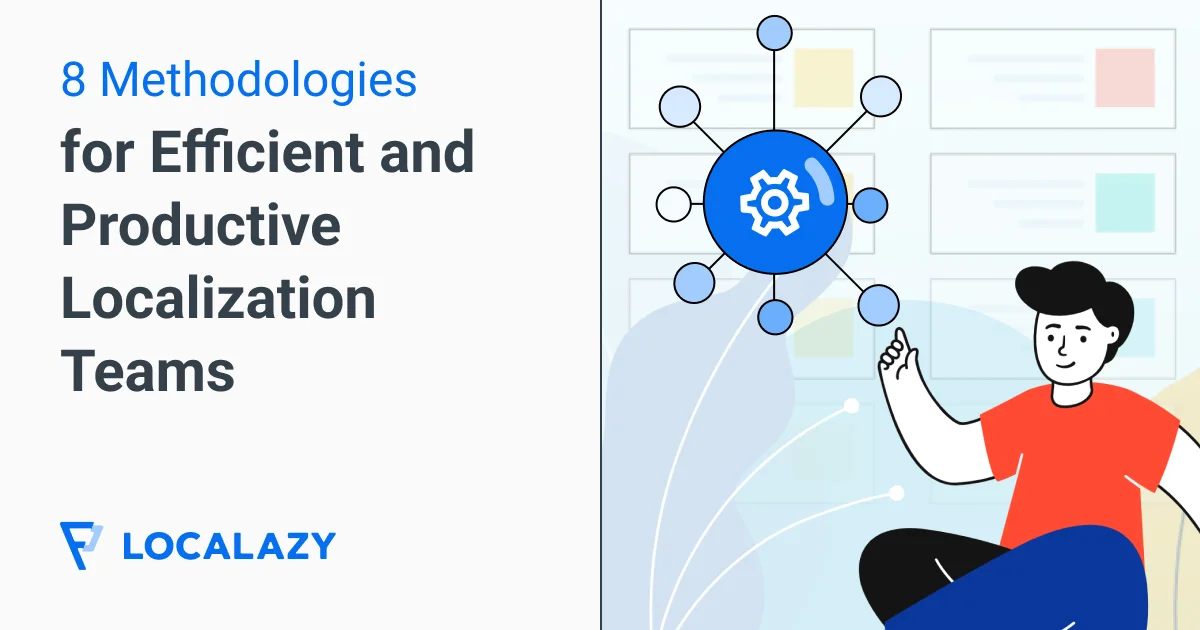
🚀 About Localazy 🔗
Localazy is a complete localization platform that helps companies prepare, launch, and scale global content with automation, high-quality translations, and streamlined workflows. Explore how to get started here, choose a plan, or contact us for support.
